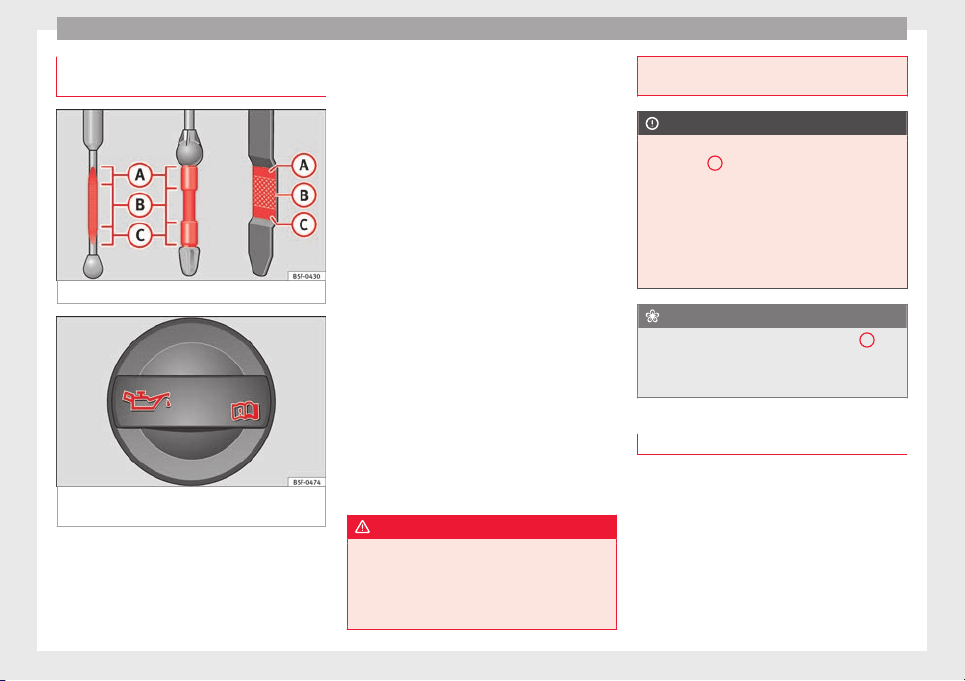Loading ...
Loading ...
Loading ...

Advice
Checking engine oil level and topping
up
Fig. 168 Marked engine oil dipstick
Fig. 169 In the engine compartment: Engine
oi
l
fi
ller cap.
Read the additional information carefully
›
›
›
page 31
Preparations
●
Park the vehicle on flat ground so that the
engine oil reading is correct.
●
The engine must be hot to be able to check
the engine oil level. Stop the engine and wait
a few minutes for the oil to drain back into
the sump.
●
Open the bonnet ››› page 186.
●
The engine oil filler neck can be recognised
by the symbol on the cap ››› Fig. 169 and
the dipstick by its coloured handle.
Check the engine oil level
●
Pull out the dipstick and wipe it on a clean
cloth.
●
Replace the dipstick, pushing it in as far as
it will go. If the dipstick to measure engine oil
has a mark, when you reintroduce it this
mark should slot into the corresponding
groove located on the upper end of the tube.
●
Remove the oil dipstick again and check
the engine oil level.
●
After reading the oil level, replace the dip-
stick in the tube completely.
WARNING
Oil could catch fire if it comes into contact
with hot en
gine components. This could lead
to a fire, explosion and severe injuries.
●
Always ensure that after topping of oil, the
engine oil filler cap is correctly tightened.
This will avoid engine oil spilling onto hot en-
gine part
s when the engine is running.
CAUTION
●
If
the engine oi
l level is above the area
››› Fig. 168
A
do not start the engine. Seek
speci
alist assistance. Otherwise catalytic
converter and engine damage may occur.
●
When refilling or changing service liquids,
ensure that you put the liquids into the right
tank. Making a mistake when refilling could
cause serious malfunctions and damage the
engine!
For the sake of the environment
The oil level must never be above area
A
.
Otherwi
se oil can be drawn in through the
crankcase breather and escape into the at-
mosphere via the exhaust system.
Engine oil consumption
The consumption of engine oil can be differ-
ent
fr
om one en
gine to another and can vary
during the useful life of the engine.
Depending on how you drive and the condi-
tions in which the vehicle is used, oil con-
sumption can be up to 1 ltr./2000 km. In the
case of new vehicles, the consumption can
exceed this figure over 5,000 kilometres. For
this reason the engine oil level must be
190
Loading ...
Loading ...
Loading ...